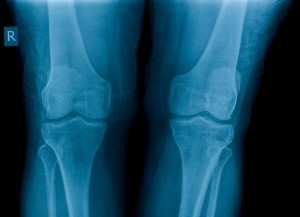Special Edition: Bone & Joint Health
Quality, efficacy help collagen ingredients gain traction in joint health market

Habits are hard to break, and consumers have a long history with glucosamine and chondroitin in joint health supplements. Even though the data backing these ingredients perhaps tells a less convincing story, like an incumbent running for office, these ingredients can rely on their history with consumers and product developers.
Skin health confusion
Until fairly recently, consumers have associated collagen mostly with skin health. Even though collagen is an ubiquitous structural protein in the body, consumers are mostly aware of its benefits in maintaining skin elasticity.
But new functional collagen ingredients have come to the fore, buoyed by science done over the last decade. Now it’s a matter of educating consumers on these ingredients' benefits.
“I still think we are in an educational phase. We’re educating consumers, manufacturers. There is still a high level of consumer acceptance of glucosamine and chondroitin,” said Lara Niemann, marketing director for North America for Gelita, which supplies Fortigel, a collagen peptide ingredient for joint health among its many collagen ingredients.
“It intuitively makes sense to supplement your body with collagen. Most of your body is in fact collagen and you body accepts that supplemental collagen. But we have a ways to go to communicate that to consumers,” Niemann told NutraIngredients-USA.
Clean supply
Niemann said having a clean ingredient is an important part of the story. Gelita sources its raw materials from bovine and porcine sources that are raised and slaughtered in Germany.
“As a customer of Gelita, our traceability records are open and available to you,” she said.
And Niemann said Gelita has ample evidence of the ingredient’s mode of action and efficaciousness. In the case of Fortigel, the ingredient is a suite of peptides, with the collagen molecules snipped up via an enzymatic process into a distribution of distinct fragments.
“We have some pre-clinical work that elucidates the method of action. We know that Fortigel is absorbed and crosses into the plasma, and we have data that is accumulates in the joint cartilage. We have data showing that it supports the strength and elasticity of joint cartilage,” Niemann said.
“We believe that with collagen peptides in general and Fortigel in particular we are targeting the root cause of joint pain,” she said.
Disappointing glucosamine?
Officials at BioCell Technology, which supplies its own hydrolyzed collagen ingredient called Biocell Collagen II, agreed that collagen’s efficacy and clean ingredient profile are helping it gain new customers.
“I have heard that glucosamine sales have flattened. I think they are now down in the single digits whereas collagen sales are in double digits for growth,” said BioCell’s president Suhail Ishaq. “If you look at the data, the studies on glucosamine’s efficacy have been disappointing.”
“The big problem is the adulteration issue, especially with chondroitin sulfate,” said Joosang Park, PhD, Biocell’s chief science officer. “The can be also be a variation in the degree of sulfation, and then there is a difference in efficacy. Chondroitin sulfate is a complex molecule and there is a quality issue in the market.”
BioCell Collagen II is a what the company calls a ‘naturally occurring complex’ of hydrolyzed type II collagen, chondroitin sulfate and hyaluronic acid as well as some other proteoglycans. The complex is a multidimensional approach to joint health, the company says.
“For our ingredient there is no quality issue. The supply chain is very tight and fully within our control,” Park said.
Bifurcated market
The joint health market tends to come down on one of two sides, with ingredients that target the erosional processes that lead to osteoarthritis on one hand, and others that take an immune system path, targeting the inflammatory pathways that can contribute to the development of rheumatoid arthritis on the other. It’s an overly simple picture, as both sides of the divide have some aspects in common, but is a helpful pocket guide to the market.
There is a collagen ingredient that started out playing on the rheumatoid space is UC II, an undenatured collagen ingredient supplied by InterHealth. UC II has a different mode of action, which allows it to skirt the pitfall of many joint health ingredients, that being their large dosage sizes. Interhealth says 40 mg of UC II is the efficacious dose, whereas BioCell calls for “1 to 2 grams” of its ingredient and currently Gelita is calling for a 10 gram daily dose. Rousselot, another major supplier of collagen for joint health, also calls for a 10 gram dose for its Peptan ingredient.
“We are not a ‘building block’ type of ingredient,” said Paul Dijkstra, CEO of Interhealth. “We believe our ingredient allows the body to rebuild itself. That is why we can get away with such a small dosage, because we are not trying to replace material.”
Fewer pills
Dijkstra said the small dosage size helps get over the primary challenge in supplementation, that being a lack of user compliance.
“From my time in the pharmaceutical world, we saw that when you tell people to take 2 pills a day, they average 1.3 or 1.4. How much better it is to have a very small pill that you only have to take once a day. If you look at one of our major customers, Schiff Nutrition, this is how their Move Free Ultra product is positioning itself. Our strategy has been compliance with a small dose once a day. If people start taking this product and use it, they will feel a benefit,” Dijkstra said.
Neimann said that when Gelita first developed Fortigel, its science suite was based on older studies that laid the groundwork for the use of type 2 collagen to support joint health. Those were all done at the 10 gram dose.
“The studies that have been done with Fortigel are all at 10 gram daily dose, too. That doesn’t led itself very well to tablets or capsules.The major applications we see now are powdered blends or ready-to-drink beverages or more concentrated liquid delivery systems, like a mobility shot,” she said.
“We of course recognize that there are lower dose claims out there. But we were looking for a certain level of scientific robustness. We are positive the 10 gram dose works. We are now moving on to the next level of scientific research using lower doses,” Niemann said.

















